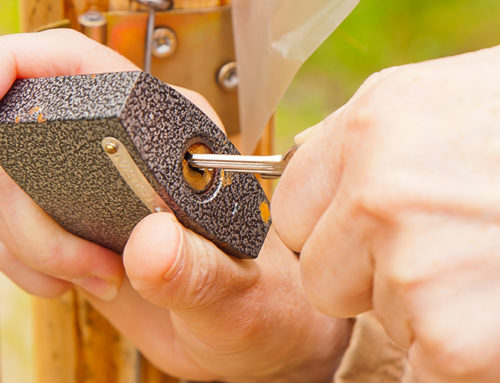Just as seeds transform into towering trees, the humble padlock has evolved over centuries, becoming an indispensable tool in our security-conscious world.
This article traces its intriguing journey, from ancient Roman beginnings to present-day technological advancements.
We’ll explore the influence of diverse cultures and the pivotal 19th-century invention of Scandinavian padlocks, culminating in the rise of the Master Lock Company in the 20th century.
Join us as we unlock the captivating history of padlocks.
Key Takeaways
- The invention of the padlock was a result of advancing technology and security practices.
- Padlocks date back to the Roman Empire and were originally used with chains.
- Chinese and Viking cultures also adopted the use of padlocks.
- The rise of electricity and mass manufacturing in the 20th century led to innovations in lock security.
Understanding Padlocks
The comprehension of padlocks involves understanding their structure, operation, and the evolution of their design over centuries.
Two primary types of padlock mechanisms exist: modular and integrated.
Modular mechanisms, offering the advantage of self-relocking, contrast with the integrated systems that necessitate a key for re-locking.
Advancements in padlock technology have dramatically altered these basic designs, providing enhanced security solutions.
With the advent of electricity and mass manufacturing techniques, the 20th century heralded an era of innovation in the padlock industry.
The Master Lock Company, for instance, revolutionized the industry with its padlock in the 1920s.
This blend of evolving mechanisms and technological advancements underscores the complexity and adaptability of padlocks in response to changing security demands.
The Anatomy of a Lock
While padlocks have evolved significantly over the centuries, their basic anatomy comprises essential components such as the shackle, body, and locking mechanism.
- The shackle, typically in a ‘U’ shape, provides the ability to secure the padlock to an object.
- The body houses inner components, including the cylinder or combination dial.
- The locking mechanism comes in two forms: modular and integrated. The former can re-lock itself when closed, while the latter needs a key for re-locking.
- Depending on the type of padlock, the mechanisms vary widely, from simple warded locks to complex disc or cylinder mechanisms.
These details illustrate the evolution of padlocks over time, underlining the ingenuity and technical advancement embodied in this humble, yet essential, security device.
Roman Padlocks: The Beginning
In the realm of padlock history, our journey begins with the Roman Empire, where the first recognizable forms of these security devices were crafted. The Roman padlocks were meticulously designed and frequently displayed intricate and artistic craftsmanship. These padlocks had profound cultural significance, often associated with the protection of wealth and status.
Their design, featuring a chain instead of a shackle, was innovative and revolutionary. This unique design is credited with influencing the modern padlocks we see today. The Roman padlocks’ robust construction and elaborate key mechanisms undoubtedly increased their effectiveness, setting a benchmark for future iterations.
Thus, the Roman Empire not only gave birth to the early padlock but also laid the foundation for the evolution of this vital security apparatus.
Padlocks: The Global Expansion
Padlocks, over time, saw a significant expansion globally, becoming a universal symbol of security and protection. This global spread underlines the cultural significance of padlocks, transcending geographical boundaries and becoming entrenched in various societies.
In Asia, particularly China, padlocks became symbolic for merchants, signifying prosperity and safety.
In Europe, they were elemental for farmers, especially Vikings, who used them for livestock containment.
The Americas adopted the padlock as an essential tool for safeguarding valuables, leading to the establishment of renowned companies like Master Lock.
The global reach of padlocks spurred security advancements, with each region contributing to its evolution. From Roman’s basic key-operated locks to the complex combination mechanisms of today, the padlock’s growth mirrors human ingenuity in the pursuit of security.
The Evolution of English Smokehouse Padlocks
The evolution of English smokehouse padlocks marks a significant chapter in the history of padlocks, underscoring the critical role they played in safeguarding precious food resources.
Initially forged from wrought iron, these padlocks were equipped with unique notches that corresponded to individual keys. However, a growing problem was smokehouse padlock picking, which undermined the security of these storage facilities.
This security concern with smokehouse padlocks necessitated the development of more intricate and resistant locking mechanisms. This evolution not only improved the security of smokehouses, but it also contributed to the broader advancements in lock technology.
Thus, the English smokehouse padlocks exemplify the dynamic relationship between security needs and technological innovation in the realm of padlocks.
During the 1800s, a new era dawned in the history of padlocks with the invention of Scandinavian padlocks by Christopher Polhem. These locks introduced unique features that revolutionized security measures.
- Design: The Scandinavian padlocks had a cast iron body and a locking mechanism composed of rotating disks.
- Operation: A uniquely grooved key was used to rotate these disks, providing enhanced security.
- Popularity: These padlocks were widely used from 1871 to the 1950s, demonstrating their effectiveness and reliability.
- Legacy: The cast heart padlock, a popular type of Scandinavian padlock, remains a symbol of historical significance.
In essence, the creation of Scandinavian padlocks marked a significant milestone in the evolution of lock security, reflecting both technological advancement and cultural influence.
The Impact of Electricity and Machining on Padlocks
As industrial advancements, particularly the rise of electricity and machining, began to reshape numerous industries at the dawn of the 20th century, they also profoundly influenced the evolution and manufacturing of padlocks.
The rise of automated manufacturing processes streamlined production, making padlocks more affordable, durable, and accessible. This democratization of security tools was a significant societal shift.
Advancements in lock technology also ensued, with complex internal mechanisms being developed for enhanced security. The introduction of multi-pin tumblers and combination locks, for instance, offered superior resistance against lock-picking.
Furthermore, the use of stronger materials, such as hardened steel, became more prevalent, greatly increasing the resilience of padlocks against physical attacks. This era marked a significant leap in the history of padlock development.
Frequently Asked Questions
What Were the Materials Used in Making the Earliest Padlocks?
The earliest padlocks were crafted primarily from durable materials such as bronze and iron, selected for their longevity and resistance to physical damage. These selections demonstrate early locksmith techniques, balancing the need for security with the limitations of available resources.
Over time, materials evolved, incorporating brass and steel, increasing the padlock’s resilience against wear and tear. Hence, material durability played a significant role in the evolution of padlock construction.
How Did the Padlock Design Evolve Over Time in Different Regions?
The evolution of padlock design reflects a riveting tale of cultural influences and technological advancements. Padlocks, carrying deep symbolism of security and trust, underwent remarkable regional transformations.
Roman padlocks had chains, whereas Vikings used them for livestock containment. Chinese merchants popularized bronze padlocks, and England saw the use of wrought iron smokehouse padlocks. Slavic regions developed screw key padlocks, and the 1800s saw the advent of Scandinavian padlocks.
This progression highlights the local cultural influence on padlock design.
Were There Any Specific Incidents That Led to Significant Advancements in Padlock Technology?
In the evolution of padlock technology, certain incidents have acted as invention catalysts, driving significant advancements.
The widespread accessibility of electricity in the 20th century revolutionized manufacturing processes, making lock production more efficient and economical. This led to Master Lock’s first padlock patent in the 1920s, marking a key moment in the industry’s transformation.
The need for enhanced security and theft prevention continues to spur innovation in padlock design and technology.
How Did the Padlocks Contribute to the Security Measures During the Ancient Times?
Padlocks played a pivotal role in ancient societies, proving essential for property protection and personal security. These key developments in locksmith innovations enhanced the safekeeping of valuables and deterred theft.
With their versatile applications, padlocks secured everything from homes to trade goods. The evolution of padlocks is marked by continued improvement in design and functionality, reflecting society’s growing security needs and technological advancements.
Thus, padlocks were vital in establishing the basis for modern security measures.
What Were Some of the Major Challenges Faced During the Mass Manufacturing of Padlocks in the 20th Century?
In the 20th century, the mass manufacturing of padlocks faced several challenges. Manufacturing innovations were needed to produce locks more efficiently and affordably. Such innovations required substantial investment in new machinery and technology.
Labor issues also arose, including the need for skilled workers to operate new machinery and the demand for fair wages and safe working conditions. These challenges had to be addressed to fully realize the benefits of mass manufacturing in the padlock industry.
Conclusion
In conclusion, the evolution of padlocks is a captivating study of human ingenuity and technological progress. From their rudimentary Roman origins to the sophisticated Scandinavian designs, padlocks have remained a constant symbol of security.
Advancements in manufacturing processes catapulted the industry into a new age, democratizing access to safety.
As keys to our past, padlocks continue to unlock the future, adapting to the ever-evolving security landscape, thus affirming their enduring place in our lives.




